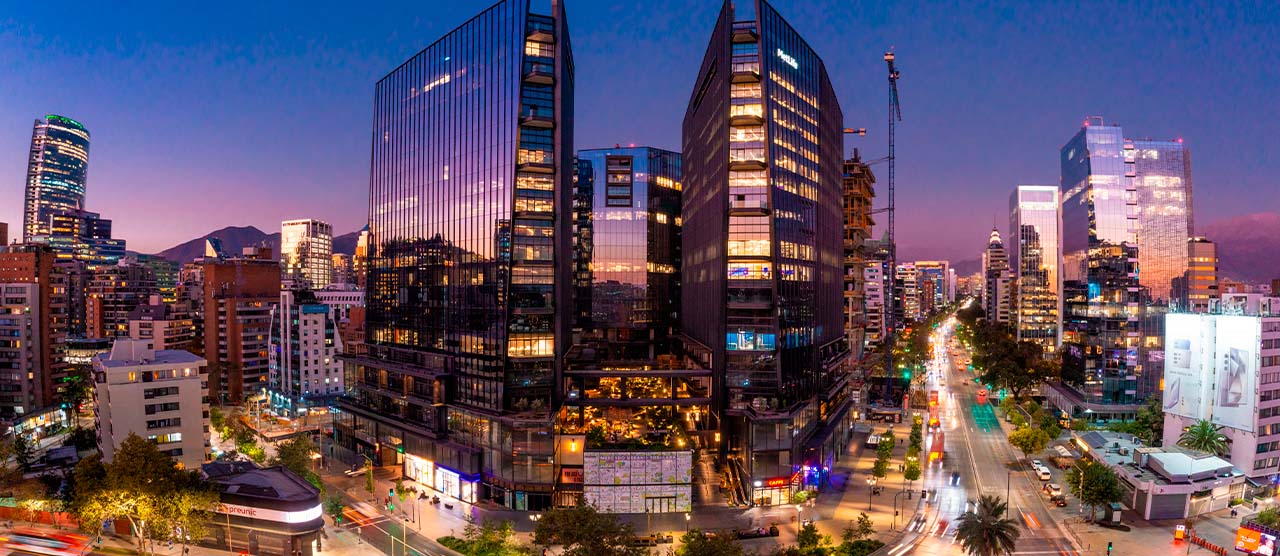
- After 55 years in the iconic building in downtown Santiago, the country's leading electricity holding company is moving to the district of Las Condes.
- The new headquarters will be in tower 2 of Mercado Urbano Tobalaba, a building with the highest and most modern welfare standards for its employees.
Santiago, April 1st. More than 1,400 employees of the country's leading electricity holding company have gradually begun the move to the new corporate building to be occupied by Enel Chile, its subsidiaries, and related companies in the most modern and sustainable architectural project developed in Chile, Mercado Urbano Tobalaba (MUT). MUT Tower 2, also called Encomenderos Tower, will be the company's new headquarters.
The new state-of-the-art building consists of 19 floors, distributed over 13,492 square meters of office space, which the electric company will occupy from the sixth to the top floor (14 in total) of Roger de Flor No. 2725 in the Las Condes district.
"The relocation process will be carried out in stages to ensure that it is efficient and smooth. The objective is for it to be a milestone that serves as a link between history and the future, strengthening the well-being and sense of identity of the workers within the company, thus contributing to the achievement of new objectives that will make the company's management more competitive, sustainable, and successful," said Giuseppe Turchiarelli, general manager (a.i.) of Enel Chile.
Each floor of the new building includes state-of-the-art technology with LEED Platinum certification (Leadership in Energy and Environmental Design) and furnishings, plus a series of fittings, to enable the building to apply for WELL Platinum certification (a scoring system for buildings and communities that identifies, measures and monitors the characteristics of built spaces that have an impact on the health and well-being of the occupants). If the application is approved, it would be the first building in Chile to obtain this distinction.
Wellness and Sustainability
Enel's values have always been centered around the well-being of their employees. The new headquarters site was chosen with this in mind, with a focus on promoting sustainability and electrification. The location boasts excellent connectivity, with direct access to the Tobalaba L1 and L4 subway stations, as well as other convenient services such as banks, commerce, cultural spaces, open-air workplaces, gastronomic offerings, and entertainment areas. This 4-tower project will provide its users with a multitude of amenities to further promote the well-being and satisfaction of its employees.
The multiple advances and advanced technology incorporated by Territoria into the MUT make it the project with the highest sustainability standards in the country today, and the renewable energy contract signed with Enel contributes significantly to achieving this goal by using renewable sources such as wind, solar, and hydroelectric power.
MUT will have electric vehicle chargers, bicycle lanes, a large Bici Hub (bicycle parking), and dressing rooms spread over two floors, which will help encourage the use of this clean and healthy means of transportation.
The design of the project contemplated providing it with intelligence and all the technology to maximize energy efficiency and care for the environment. For this purpose, water from the groundwater table (without consuming water) is now used for the building's air-conditioning (geothermal air-conditioning). Together with other initiatives, these techniques reduce energy consumption by 32%.
Green areas will be irrigated 100% with recycled or reused water. To this end, rainwater will be stored, ambient humidity will be captured, and gray water will be recycled to save 7 million liters per year. These solutions are in addition to a biodigester, which will receive organic waste and transform it into biogas for the kitchens and fertilizer for the gardens.
This change of address closes a chapter of 55 years in which the then ENDESA erected one of the most iconic buildings of the capital's architecture, whose exposed concrete was a novelty for those who stopped at Santa Rosa 76 to contemplate what was one of the most striking and sophisticated projects of the time, designed by architects Luis Larraguibel, Gastón Etcheverry, Jorge Aguirre, and Emilio Duhart. The center's emblematic tower, whose commissioning coincided with man's first visit to the moon when Neil Armstrong and Apollo 11 landed on the moon in July 1969.

